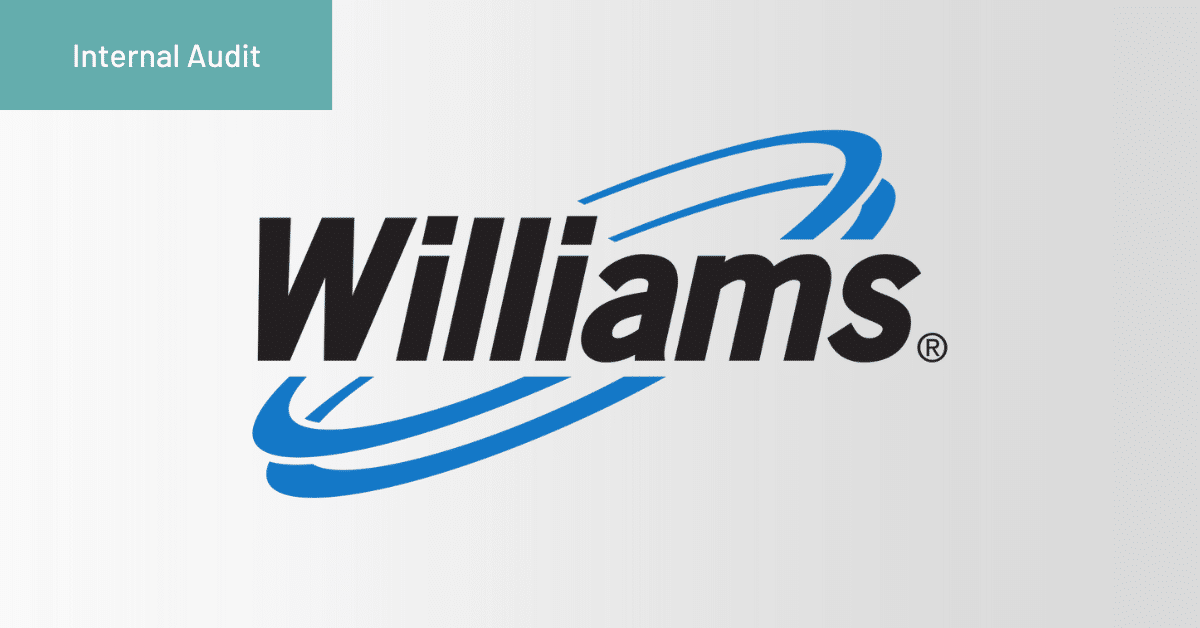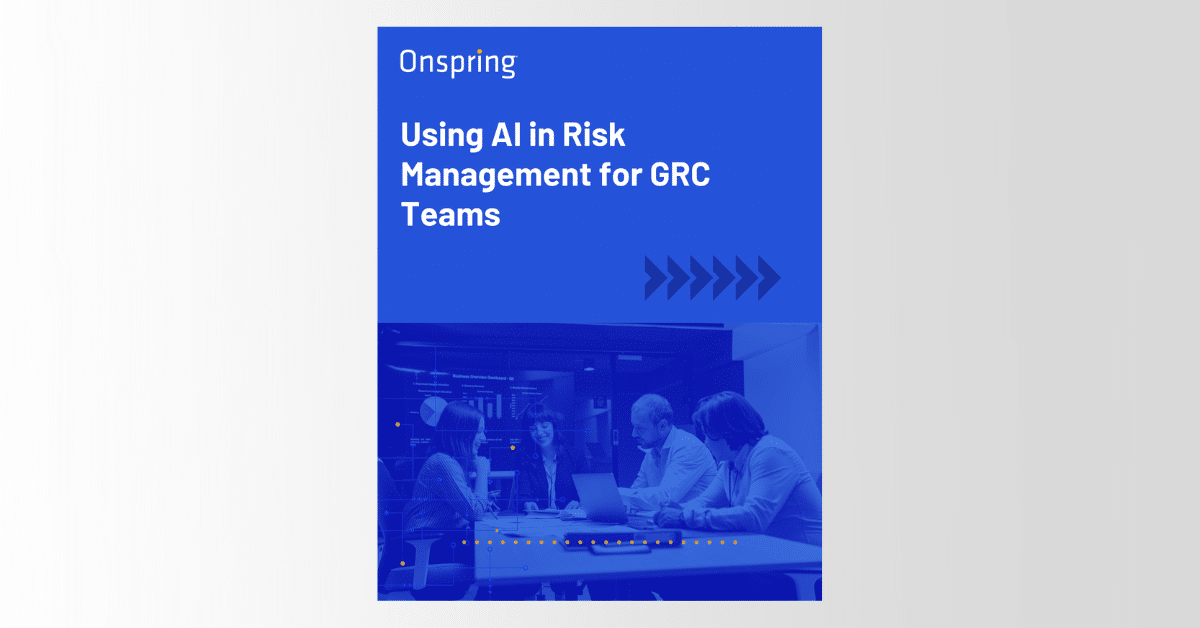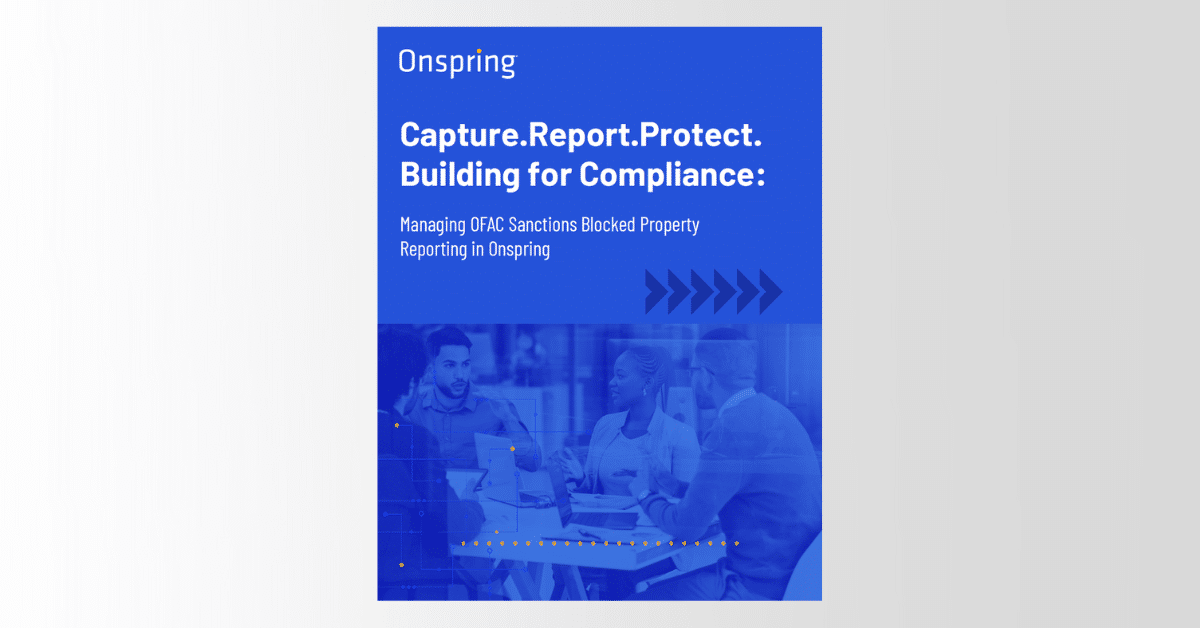Understanding data privacy is mission critical for Chief Privacy Officers and Data Protection Officers, particularly when your organization handles sensitive personal data. But it’s also important for other team members to understand the nuances of data privacy. Familiarity with compliance and data management best practices, as well as the relevant regulations specific to your area, ensures your organization stays on the right side of the law while protecting your customers’ and clients’ trust.
What Is Data Privacy?
Key U.S. Data Privacy Laws and Regulations
Core Principles of Data Privacy
Consumer Rights Under Modern Privacy Laws
Business Obligations for Data Privacy Compliance
Data Security and Breach Prevention
International Data Transfers
Emerging Trends and Technologies in Data Privacy
Best Practices for Data Privacy Management
Resources and Tools To Help You Achieve Data Privacy Compliance
What Is Data Privacy?
Data privacy is a subdiscipline of data security that individuals have a rights in regards to the processing of their data. These rights are known as data subject rights and are applicable to the individual consumers who own the data. Data privacy dictates all aspects of data handling, including data collection, storage best practices, consent management, and regulatory responsibilities.
Data privacy laws protect the immutability and secrecy of personal data and sensitive information such as health and financial records and intellectual property data. Data privacy regulations guide how organizations can share user data with third parties as well as where that data goes and methods of storage.
Data privacy integrates with data security. Security actions such as encryption, authentication, access control, and threat monitoring are expected in the effort to protect personal data. However, implementing these measures aren’t a guarantee the data will remain private.
The Gandalf Method is perhaps the most straightforward way to explain the overlap between data privacy and security. The question is twofold: “Is it secret? Is it safe?”
Before we get into the nitty-gritty of data security, let’s explore common data privacy laws every data professional should know inside out.
Key U.S. Data Privacy Laws and Regulations
While comprehensive federal privacy regulation does not exist in the U.S., the right to privacy was established in Amendment IV of the U.S. Constitution.
The right of the people to be secure in their persons, houses, papers, and effects, against unreasonable searches and seizures, shall not be violated, and no Warrants shall issue, but upon probable cause, supported by Oath or affirmation, and particularly describing the place to be searched, and the persons or things to be seized.
While the amendment is more traditionally known for the requirement that law enforcement have a warrant to search and/or seize your property, electronic data and surveillance is impacting the interpretation of the amendment.
The primary legal test for the expectation to privacy is from Katz v. United States, 389 U.S. 347 (1967) where a two-part test was established for the reasonable expectation of privacy by a U.S. citizen:
- The citizen has exhibited an actual (subjective) expectation of privacy.
- The expectation is one that society is prepared to recognize as reasonable.
This case and others laid the groundwork for expectations to privacy in electronic communications. As an example, many of us have warning messages when signing on to our work computers that we have no expectation to privacy. This amendment, and case law regarding it are the reason why you see that message.
The purpose of the Fourth Amendment is to protect people. However, in cases of health, financial, and the data of children, law has been further developed to protect individual’s rights. U.S. data privacy regulations are federal and state-based. Every U.S.-based professional and organization must adhere to the pertinent federal and state laws in their jurisdiction. Here are key federal laws you should know.
Health Insurance Portability and Accountability Act of 1996 (HIPAA)
The Standards for Privacy of Individually Identifiable Health Information, dubbed the Privacy Rule, safeguards the confidentiality of individuals’ health information. It sets standards and controls how organizations use and share individuals’ protected health information. It also sets standards for individuals’ privacy rights that give patients control over how their health data is utilized.
By and large, the Privacy Rule protects individuals’ health data while enabling its free flow to support organizations in delivering quality healthcare and elevating general public health standards.

The Gramm–Leach–Bliley Act (GLBA)
Also called the Financial Services Modernization Act of 1999, the GLBA mandates financial institutions to protect consumers’ confidential data and be frank about how their data is used by requiring these institutions share their policies and practices. It requires financial regulatory agencies such as the Federal Trade Commission (FTC) to create administrative frameworks and policies that uphold the security and confidentiality of customers’ financial records and information.
The Children’s Online Privacy Protection Act (COPPA)
COPPA gives parents and guardians control over the type and nature of information websites can collect online from their under-13 children. The COPPA rule applies to all kinds of commercial websites and online vendors, such as manufacturers of smart toys and IoT devices. COPPA regulates how such websites and vendors collect, use and share personal data of children under 13 years of age.
The Family Educational Rights and Privacy Act (FERPA)
FERPA grants parents access to their children’s educational records. It gives parents control over how personally identifiable information in their children’s education records is disclosed to third parties. FERPA also grants parents the right to have their children’s education records amended appropriately.
Navigating State Laws
Managing privacy programs has become even more complex since each state has its own regulations, rather than having a unified federal standard. Below are four of the more commonly known state laws:
- California Consumer Privacy Act (CCPA): The CCPA gives California consumers more control over their personal data collected by businesses. It grants consumers the right to delete or opt out of data collection, selling, and sharing processes.
- The Virginia Consumer Data Protection Act (VCDPA): The VCDPA gives Virginia residents the right to delete personal data, opt out of the sale and further data processing, uphold data authenticity by amending inaccuracies, and grants the ability to obtain copies of their personal data from organizations.
- Colorado Privacy Act (CPA): The CPA grants Colorado residents more rights over their personal data, such as the right to decline the sale of their personal data and the right to delete, correct, and access personal data.
- The Connecticut Data Privacy Act (CTDPA): The CTDPA, which took effect on July 1, 2023, grants Connecticut residents specified rights over their personal data and sets data privacy management standards for controllers of personal data.
Besides California, Connecticut, Colorado and Virginia, these states also have comprehensive privacy laws:
- Delaware
- Florida
- Indiana
- Iowa
- Kentucky
- Maryland
- Minnesota
- Montana
- Nebraska
- New Jersey
- New Hampshire
- Oregon
- Rhode Island
- Tennessee
- Texas
- Utah
Additionally, as this state-by-state privacy legislation tracker heatmap shows, more states continue to introduce comprehensive privacy laws that address everything from data collection transparency to data security measures and enforcement mechanisms.

Core Principles of Data Privacy
The following core principles guide data controllers in achieving and demonstrating data privacy compliance. A data controller is a private (individual) or public entity (organization or public body) that decides the purpose, means, and methods of processing personal data.
Purpose Limitation
This principle states that the collection and processing of personal data must be tied to a specific and authentic purpose. You should not further process data beyond the initial purpose, except to advance statistical, historical, and scientific objectives that serve the public good.
Data Minimization
The amount and nature of the personal data you collect should be limited to the bare minimum required to achieve the initial purpose. Data controllers shouldn’t collect or process irrelevant or excess data in the anticipation that it will be useful in future endeavors.
Lawfulness, Fairness and Transparency
This principle states that personal data should be collected and processed in a legal manner that’s fair and transparent to the data subjects. Before commencing data collection, you should explicitly state in a privacy policy the type of data you seek to gather and the reasons behind your efforts.
Accuracy and Storage Limitation
Organizations must collect accurate personal data and make it a best practice to update it frequently. This principle also requires you to delete or amend inaccurate data so it complements the original purpose.
Additionally, personal data should only be stored for as long as it serves the purpose for which it was collected and should be deleted after it has completed its objectives. You can store personal data for longer only for specific purposes such as scientific, historical, or statistical research.
Consent and Individual Rights
Data controllers must obtain consumers’ permission before collecting, processing, and sharing personal information. You can only skip consent when you’re legally required to do so or when the data is intended for public interest use.
Consumer Rights Under Modern Privacy Laws
Most privacy laws, especially state privacy laws, are relatively new and provide consumers with broader rights. Common rights that many regulations replicate across the board include:
- Right to access and portability: Consumers have the right to request organizations holding their personal data to send them the entirety of the data by mail or electronically in a machine-readable format at no cost.
- Right to deletion and correction: Consumers are free to ask businesses with their personal data to delete or amend it to maintain accuracy.
- Right to opt out of data sales and targeted advertising: Consumers are at liberty to order an organization that sells data to third parties not to trade their personal data.
- Special protections for sensitive data: Consumers can direct organizations to provide extra protection for sensitive data such as genetic data, Social Security numbers or financial data and use the data only to facilitate specific service delivery they’ve requested.

Business Obligations for Data Privacy Compliance
Companies can achieve and sustain data privacy compliance by taking the following actions:
Drafting Comprehensive Privacy Notices and Policies
Drafting a data privacy policy is the first step toward achieving data privacy compliance. Your privacy policy should include the following crucial information:
- Describe how your company’s websites collects, uses, stores and shares personal data and the data categories you track.
- Detail your company’s responsibilities as well as consumers’ responsibilities.
- Outline data subject rights and the procedure for filing a verifiable customer request.
- Explain the type of notification consumers should expect in case of a data breach.
Conducting Data Protection Impact Assessments (DPIA)
A DPIA is a systematic process of identifying, assessing, and monitoring risks to data subjects privacy that an organization’s data processing can trigger. Regulations can have different requirements for these assessments. Generally, you should conduct a data privacy impact assessment before deploying a new technology or process and routinely based on risk or regulatory requirements.
Drafting Vendor Management and Data Processing Agreements
Creating data protection agreements (DPA) when working with third-party vendors helps you safeguard the privacy of your customers’ personal data. When working with vendors such as third-party logistics companies, you often have to share sensitive customer details like location data. Having your third-party partners sign a DPA obliges them to uphold data privacy standards on their end.
Supporting Employee Training and Awareness Programs
Upskilling your employees on data privacy best practices empowers them to uphold privacy compliance seamlessly. Consider sponsoring your employees attendance to data training and awareness programs that will keep their privacy skills extra sharp.
Data Security and Breach Prevention
Effective data security measures are essential for upholding data privacy. In case of a data breach, your customers’ data will be exposed to external threats that can cause malicious damage. Implement these strategies to avoid such unwanted effects:
- Implement technical and organizational measures (TOMs): Operationalize guidelines like proper use of firewalls and virus scanners to comply with relevant privacy laws such as CCPA, and GDPR if you run a business in the European Union.
- Leverage encryption and anonymization techniques: Implement data anonymization techniques such as pseudonymization, data masking, tokenization, generalization and cryptographic encryption. These techniques make it extra difficult for malicious actors to identify individuals using their personal data.
- Create a privacy incident response plan: This document outlines the step-by-step procedure that data professionals should follow to contain a privacy incident, such as a data breach.
- Establish breach notification requirements: Detail particulars such as the timeframe for reporting a data breach, the reasons for the breach, and the relevant parties to inform about breach incidents.
International Data Transfers
The digital economy has further enabled global trade. Not only is it easier for businesses to interact with one another across boarders, consumers can also directly interact with a business in another country. As such, the transfer of data across borders is inevitable. Consider the following provisions to maintain data security during such international transactions.
Cross-Border Data Flow Regulations
Review the different regulations governing cross-border flow, such as Executive Order 14117, issued in early 2024. If you do business with Chinese vendors, you should review the provisions of the recently introduced Regulations on Promoting and Regulating Cross-Border Data Flow.
Impact of Schrems II Decision
The Schrems II ruling applies to EEA-based businesses subject to GDPR. The ruling introduced new changes regarding the export of personal data to non-EEA businesses. Data controllers should conduct a Transfer Impact Assessment (TIA) to ascertain adherence to Schrems II provisions.
Emerging Trends and Technologies in Data Privacy
Like any other discipline, data privacy law and best practices are constantly in flux with the introduction of new technological developments. Here are some major trends affecting data privacy compliance right now.

- Artificial Intelligence(AI) and machine learning (ML): AI and ML can enhance data security by supporting real-time threat detection, automating data cleaning and enhancing data encryption quality. But to function effectively, AI systems require large amounts of data, raising concerns about how this data is collected, stored, and used. And while AI enhances security measures like threat detection, it also presents new attack vectors that malicious actors could exploit if not properly managed.
- Internet of Things (IoT) and smart devices: IoT devices collect sensitive data such as health information and location data. This data poses new data breach and leak risks, which means robust measures should be in place, like:-encryption techniques that safeguard data during transmission and storage;
-implementing strict access controls so only authorized personnel can interact with sensitive information;
-regular audits to identify and rectify vulnerabilities in systems. - Biometrics and facial recognition: The biometric data collected by these technologies is highly sensitive, triggering an unprecedented risk to data privacy. These technologies access a variety of highly sensitive personal information, including fingerprints, facial features, iris patterns and voiceprints. If there are inadequate security measures or breaches, it could lead to identity theft or unauthorized surveillance. For individuals, this might mean financial loss or personal privacy invasion. For organizations, compromised biometric data can result in reputational damage and legal repercussions.
- Privacy-enhancing technologies (PETs): Leveraging PETs, such as secure multi-party computation (MPC) and end-to-end encryption, help enhance data privacy. This is another layer of healthy protection, but it may give a false sense of security. Relying solely on PETs without a comprehensive security strategy could create vulnerabilities elsewhere in the system.
As technologies continue to evolve rapidly, it’s important for both developers and users to prioritize robust privacy measures.
Best Practices for Data Privacy Management
Keep these tips in mind to mature your data privacy practices.
Create a Privacy-First Culture
This involves fostering an environment where every team member prioritizes and respects user privacy in their daily tasks. It’s about embedding the value of privacy into the company ethos, ensuring everyone is aware of its importance and actively considers it in decision-making processes. This cultural shift encourages proactive thinking about data protection at all levels.
Implement Privacy by Design
On the other hand, implementing privacy by design is a more structured approach. It involves integrating privacy considerations directly into the development of products or services from the outset. This means designing systems with data protection features built-in rather than added as an afterthought. It focuses on technical measures and systematic processes to ensure that user data is safeguarded throughout its lifecycle.
Conduct Regular Audits and Assessments
Think of audits and assessments as your organization’s health check-ups. Just like you’d visit a doctor for a wellness appointment, regular audits help keep your processes, systems, and compliance on track. By identifying any gaps or inefficiencies early on, you can make informed decisions to improve operations before minor issues turn into major headaches. Plus, it fosters a culture of continuous improvement—always striving for better.
Stay Updated with Regulatory Changes
Staying updated on the latest regulation changes ensures that your organization remains compliant with new laws or amendments that could impact your industry. This proactive approach not only minimizes risk but also positions you as a leader who’s ahead of the curve instead of playing catch-up.
By combining these strategies, organizations can create a robust framework for protecting user information while maintaining trust and compliance with regulations.
Resources To Help You Achieve Data Privacy Compliance
Leveraging these resources can help you streamline data privacy management and achieve compliance more quickly:
- Utilize pertinent data privacy assessment frameworks such as the NIST Privacy Framework and EU-U.S. Data Privacy Framework (DPF) to model compliance standards.
- Use privacy policy generators such as Termly, TermsFeed and GetTerms to draft your business’s privacy policies.
- Pursue online data privacy courses to expand your knowledge.
- Seek industry associations and certifications from reputable groups such as the International Association of Privacy Professionals (IAPP).
Help for Managing Data Privacy
We understand that data privacy regulations can leave many gray areas for your business, especially if you operate in multiple jurisdictions, whether in different states or countries. That’s why our Data Privacy Management software is ready to help. Schedule a demo today and discuss your particular needs with our our automation experts for achieving data privacy compliance.



